AudioCulture
The noisy library of New Zealand music
Te pātaka korihi o ngā puoro o Aotearoa
Che Fu
aka Che Ness
Che Ness was introduced to live music at an early age – he was four years old when he found himself on the stage at Western Springs Stadium in April 1979, watching Bob Marley perform from a position next to the Wailers’ keyboard player. His Niuean father, Tigilau Ness, went on to become one of the key figures in the local Rastafarian movement, helping start the 12 Tribes of Israel organisation in New Zealand in 1982, and in the birth of the Auckland reggae scene through his band, Unity Pacific.
Supergroove
Of Māori and Niuean heritage, Che was raised by his grandmother, though having a musical father ensured he was raised with a daily soundtrack that included not only reggae, but also Stevie Wonder, Maceo Parker, James Brown, The Gap Band, and the classic Motown artists. His interest in music was made concrete when his aunt bought him a guitar at age 14. One of his friends at Seddon College (now Western Springs) was Ned Ngatae, who subsequently moved from Seddon to Selwyn College and began playing with a combination of students from both schools as the Lowdown Dirty Blues Band. He suggested Che join them on guitar, eventually leading to Che replacing him in the band.
In the meantime, Che had joined the Seddon College choir and was fast developing a soulful singing style. The story of the subsequent years is well-known – the Lowdown Dirty Blues Band morphed into funk group Supergroove, with Che as co-lead singer alongside Karl Steven. Che also had a growing interest in hip hop music, especially after catching sets by influential DJ Manuel Bundy at clubs on High Street. His burgeoning rap style was on display on ‘You Gotta Know’ – Supergroove’s first hit to reach the top five.
Supergroove’s debut album went platinum at home and made a huge impact in Asia (selling 35,000 units in Indonesia alone), and their extensive touring provided a perfect training ground for the young Che. However, their songs were primarily written by Karl Steven and Joe Lonie so Che had limited ability to develop his own musical ideas. Yet, he would have little choice but to find his own way when he was suddenly ejected from the band at the height of their fame – part of a decision to move in a different musical direction.
Birth of a solo artist
Fortunately, Che had been befriended on tour by hip hop producer DLT (at the time, DLT was in Joint Force, who supported Supergroove on a national tour). When DLT came to record an album, he brought Che on board to contribute and this became his first release under the name “Che Fu” – combining his first name with his love of kung fu. Che later admitted in an interview in Back2Basics magazine that he didn’t realise DLT intended him to do the vocals for an entire track:
“As far as I knew I was just going to bust a rhyme on one of his songs. I go in the booth and he says, ‘You got your chorus ready?’ I was like, ‘Chorus?’ I didn’t want to look like I didn’t know what I was doing, so I said, ‘I just have to go to the toilet.’ I go in to the toilet and am like, ‘Oh my god, oh my god! He thinks I’m doing a whole track.’ So I stand there, in the toilet, and came up with ‘Come break my chains come help me out ...’ I went straight back to the booth and sung it even though I had made it up 30 seconds before!”
Remarkably, Che had nailed it – his hooky chorus slotted in well with the slick verses he’d written, which railed against French nuclear testing in the Pacific. ‘Chains’ hit No.1 and stayed there for five weeks.
Both DLT and Supergroove put out their music through BMG and the label soon realised that had a potential star on their hands with Che Fu. The label sent Che and DLT to New York to soak up the hip hop scene and encourage them to push their own careers forward. They returned to Auckland and began working on more music together, but Che found they had differing ideas about how a track should sound so they amicably parted ways, leaving Che to find a new collaborator to realise his ideas.
2BSpacific
Che Fu kept a presence on the live scene in the late 90s by appearing as part of the Token Village crew, who played regular shows at Cause Celebre nightclub. The band included musicians who would have a long association with Che, such as guitarist Ned Ngatae, bassist Chip Matthews, DJ Sub-zero, and the “TVMCs” – Ras Daan, King Kapisi, and Phatmospheric. One of the DJs associated with the crew was Submariner (aka Andy Morton), who was also making his name as a producer. The pair’s first release together was on the Dam Native track ‘The Son’ – Morton created the beat and Che sung the hook.
In the background, the pair had also begun working together on Che’s debut album – initially taking some of the tracks he’d created with DLT and reworking them from the ground up. Morton had a studio called The Hut in the old TV studio building on Shortland Street and they spent long hours trying to turn Che’s ideas (some jotted down, some just in his head) into completed tracks. In all, it was three years since ‘Chains’ before Che Fu had an album he was satisfied with.
It was three years after ‘Chains’ before Che Fu was satisfied with an album.
His first solo single was ‘Scene III’, one of the few tracks on the album not produced by Morton (instead the beat was by singer-turned-producer, Chong Nee). The post-chorus introduces a sample that sounds slightly Chinese in nature. Director Alicia Williams expanded on this theme by setting the music video in a Chinatown setting (allowing Che to dress kung fu style). The music and the visuals felt fresh and pushed the song to No.4 and saw it named “song of the year” at the following year’s music awards.
Cunningly the next single to appear off the album was really a double A-side, with the slick R&B track, ‘Without A Doubt’, pushed to commercial radio and released as a music video, which was backed by the electro funk track, ‘Machine Talk’, that found an audience with underground hip hop fans (it was also supplied in various remix versions). The gambit worked with the single racing to No.1 in October 1998.
The album, 2BSpacific (1998), followed the next month and went to No.2 in its first week (the top spot was held by B*Witched, who’d done an instore in Auckland to gin up local sales of their album). 2BSpacific lasted 16 weeks on the charts, but its sales run went on much longer, eventually pushing it past double-platinum. Part of its appeal was the seamless fusion of styles, with Che singing in a soul/funk style on one track (‘Hoodies’), rhyming on another (‘The Mish’), then moving onto a reggae groove elsewhere (‘Trust’).
One of the most remarkable tracks on the album, ‘Waka’, was released as a final single the following year, reaching No.6. It opens with Che playing Cook Island drums, which are then underpinned with a heavier hip hop beat and ultra-funky bassline. The melodic elements are just as strong, with wonderful keys parts and soulful singing by both Che and Teremoana Rapley (singer/rapper and former member of Upper Hutt Posse) who provides the second verse and joins him in the chorus. ‘Waka’ is a world-class track that is unmistakably Polynesian and proud of it, with an equally striking video shot on location in Hawaii.
Navigator
Che Fu was now one of the biggest acts in the country and he started 1999 with a huge show, supporting Janet Jackson and Boyz II Men at Mt Smart Stadium. He had also released a version of ‘Get Up Stand Up’ which was used in an advertising campaign to encourage youth to vote. Around the same time 2BSpacific was released he also had his first child, so he took a little while to catch his breath and consider his next move.
In order to work on tracks at home, he purchased his own Akai sampler to capture his new song ideas. He kept active on the live scene by starting his own club night, The Realness, in 2000. In the intervening years he switched labels: staff turnover at BMG meant that his contacts there, such as Kirk Harding and Phil Bell aka Sir-Vere, had long since moved on, so he moved to Sony.
For his next album, Che decided to create his own group, The Krates, to back him, initially bringing together some of his long-time collaborators: bassist Chip Matthews, drummer Paul Russell (from the original line-up of Supergroove), guitarist Brother Zeb (aka Brian Taite), and 12 Tribes of Israel's James Levi on samples, as well as the The Villajah MCs (Hazadus, Ras Daan, and Phatmospheric). He completed the line-up by adding experienced keyboards player Godfrey de Grut from The New Loungehead and DJ P-Money, who’d recently made a name for himself as a battle turntablist (winning the local ITFs three times and coming third at the international DMC comp).
Che Fu’s album ‘Navigator’ debuted at No.1 in 2001.
In August 2001, Che Fu showed the power of his new group with the single ‘Fade Away’, which shot to No.2, supported by a video introducing the band (portraying them as World War Two soldiers taking a break to play some music). Local audiences were already primed for his album release, so rather than waiting for the next single, his album Navigator (2001) was released while ‘Fade Away’ was still in the charts and it debuted at No.1 (it would remain on the charts for nearly a year, reaching triple platinum).
It’s hard to express just how omnipresent Che Fu’s music was that summer. You’d be equally likely to hear it at hipster Grey Lynn BBQ as you would be to hear it at the Auckland City Mission. The seamless blend of hip hop, R&B, and reggae was across the country and there was even a track fully in te reo (‘He Kotahi’) that showed he was going to use his moment in the limelight to represent his heritage (Che’s mother is Māori).
Two more Top 20 singles followed – ‘Random’ and ‘Misty Frequencies’ – and Che Fu received five honours at the NZ Music Awards in 2002 – album of the year, single of the year, best video (‘Fade Away’), best male vocalist, and the inaugural R&B-hip hop category (not to mention the TV2 people’s choice award). If that wasn’t enough, Che Fu and Godfrey de Grut also received that year’s APRA Silver Scroll award for songwriting for ‘Misty Frequencies’. He undertook his first tour of Australia, doing seven dates across the country, and he returned repeatedly in the years that followed.
Che guested on a track on Nesian Mystik’s breakthrough album, Polysaturated (2002) and joined King Kapisi on Top 10 single, ‘U Can’t Resist Us’ (in 2003). In the meantime, his DJ P-Money had released his own album, which was certified gold and produced a No.1 single for rising star Scribe (‘Stand Up’). Che Fu had helped push open the door to commercial acceptance for local hip hop and now a new wave of acts were bursting through in his wake.
Beneath the Radar
Che Fu played regularly in the years that followed, though he was briefly put out of action by a perforated eardrum in 2003. He had three young children at home by this stage so after a year of working on his new album, he decided to put it aside and help look after them.
When Beneath the Radar (2005) finally arrived, it was a bit of a surprise for fans used to Che Fu creating music alongside The Krates. The album opens with two tracks, ‘Control Tower’ and ‘Remember 2 Forget’, that are sparse, bass-heavy and built over angular beats built up from samples, an approach that reached its zenith on the off-kilter track, ‘Flaxmat Theory’.
The tracks were fascinating in their willingness to experiment and try new approaches, but resulted in the album being dominated by a heavy underground hip hop sound that was quite distinctive from Che’s earlier releases. In the Hi-Score liner notes he later described it as being “pretty off the scale creatively compared to my previous albums”. It did give him a chance to nod to his origins in the Auckland reggae scene, given that ‘D+D’ was based on a sample from ‘Dragons and Demons’ by Herbs, who played regularly with his dad’s band, Unity Pacific.
Paul Russell, Chip Matthews, and Godfrey de Grut contributed to some tracks, but the majority were based on beats made by Che Fu on his own (or, in one case, with him laying down guitar and bass himself). Furthermore, The Krates still joined him as a live act, though now with Stephanie Brown on keys and Aaron Young (DJ Furious) on the turntables. The Krates also appeared on the next music video (for the track ‘2d’). His next single, ‘Lightwork’, was driven by a strong chorus hook and interesting sample rhythm, which gave another boost to album sales. ‘Mysterious Vibe’ was similarly catchy, but like the two releases that preceded it, failed to chart, even while they helped push the album to No.7.
Part of the reason his singles gained less interest may have been that it was now 13 years since Che had first appeared on the charts with Supergroove and he was up against a plethora of young acts that had an edge of freshness in comparison. Fans still turned out en masse to see Che Fu play live, but he was always going to struggle to match Scribe or Nesian Mystik in terms of sales (though Beneath the Radar did go gold).
In fact, his live show was better than ever: particularly memorable was the moment in his set where he’d get his turntablist and band to play off against each other, taking turns in an attempt to hit the funkiest groove. His power as a live performer meant that he would continue to draw huge crowds to his shows in the years that followed, though Beneath the Radar is – to date – his most recent album of new material.
Hi-Score
The following year, Che Fu finally took the opportunity to capitalise on some of his hard work over the previous decade by releasing a best of compilation, Hi-Score (2006). He also took the opportunity to record a few new tracks, most notably his collaboration with Aaradhna, ‘Spin 1,’ which hit the Top 20 (the comp itself hit No.10). One of the most fun tracks on the album was ‘Chains Reloaded’, a remix of ‘Chains’ created with P-Money and featuring Savage.
From this point onward, Che Fu allowed his music career to take a back seat to his home life, though he still never let a year go by without hitting the live stage or collaborating on a track. In 2007, Supergroove reformed and he was given the chance to play large scale events such as Big Day Out and the Rugby World Cup opening ceremony. In 2008, he appeared on the Nesian Mystik track ‘Mr Mista’ (also featuring Kimbra), which reached No.3 on the charts; in 2012 he featured on AWA’s solo track, ‘Papatuanuku’; and in 2014 he laid down a verse and the chorus hook for 'Coconut Lime' by Team Dynamite.
Che Fu has always taken the time to contribute to songs that promoted a good cause
Throughout his career, he has always taken the time to contribute to songs that promoted a good cause, one of the earliest being the cover of ‘Anchor Me’ in 2005 that marked 20 years since the sinking of Greenpeace’s Rainbow Warrior (Milan Borich from Pluto and Kirsten Morrell from Goldenhorse also appeared). He recorded an anti-violence track, ‘Think Twice’, with the Aotearoa Allstars in 2008, and ‘Sensitive To A Smile’ with the Aotearoa Reggae Allstars, which hit No.2 in 2013. In 2014, he contributed a verse to a song that argued for the release of prisoner Teina Pora (Pora was released later that year and subsequently received compensation for wrongful imprisonment).
These side projects show the way in which Che Fu has always been out to do more than just sell records throughout his career. He has remained equally focused on making a positive difference in society. His hard work was rewarded with a Lifetime Achievement Award at the 2014 Pacific Music Awards.
Over the years since his last album, his music has remained some of the most beloved in New Zealand hip hop. Its firm foundations in classic hip hop, funk and reggae have also meant that it has stood up remarkably well over time: how else can you explain why his most popular song on Spotify has more streams than those by Scribe and Nesian Mystik? Che Fu brought local hip hop into the mainstream, but his real legacy is his music, the best of which is timeless and remains as fresh as the day it was written.
In October 2018, to mark the 20th anniversary of 2BSpacific's release, the album was reissued on vinyl, albeit with three tracks removed to fit the music on a single disc. Recalling the original reception to the album, Che Fu told Radio NZ, “... it was great, everyone dug it. Radio was loving it; the public was feeling it. For me, one of the most important things was that the record company realised that I was a serious record maker. Like, if I was going to do some more, it wasn’t going to be a risk.
“It was like I finished the exam, you know what I mean, I finished the test! I could do it, I can make records. And I felt like it proved the point to [BMG] and I felt extremely happy about that ’cause it meant that I was able to have a career in this.”
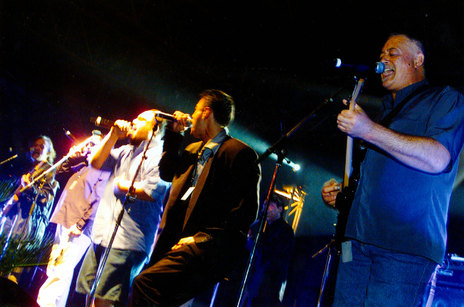
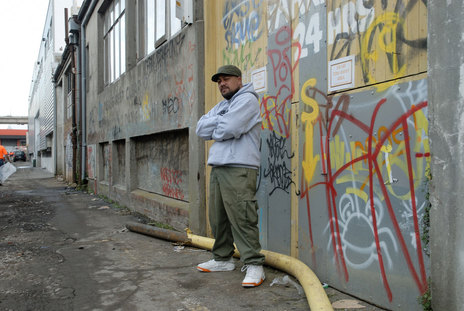
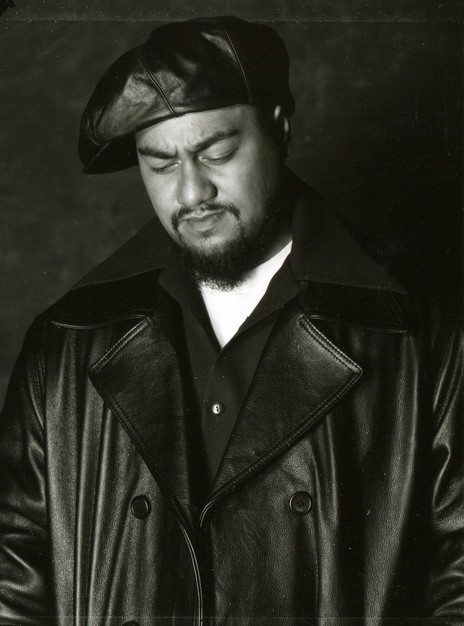
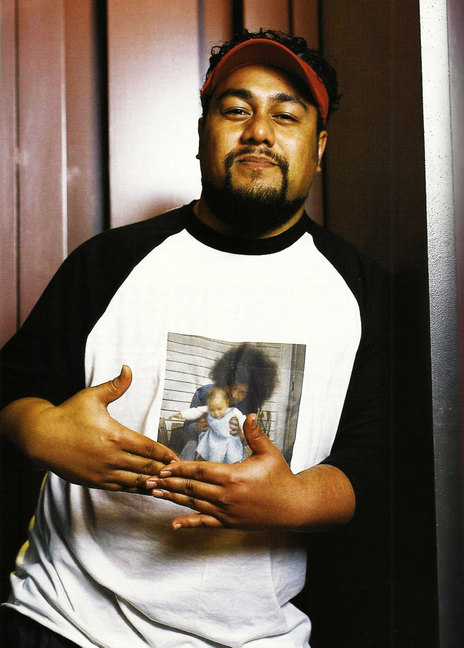
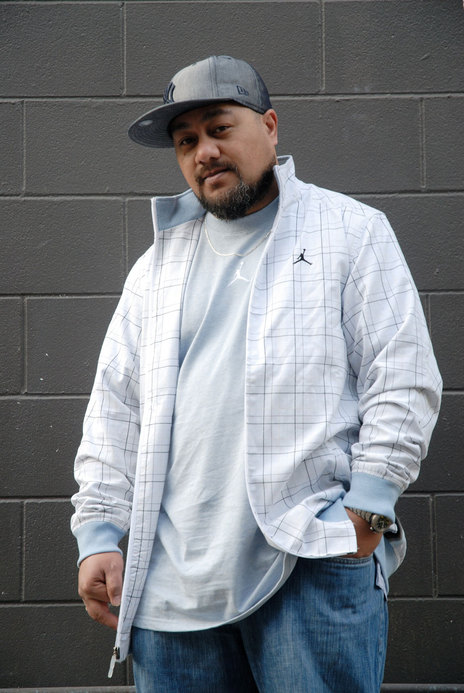
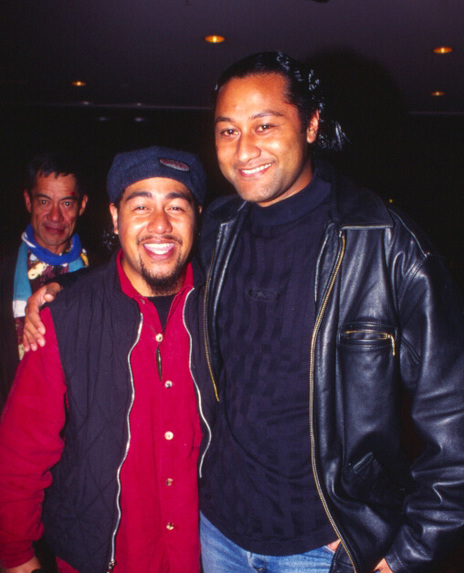
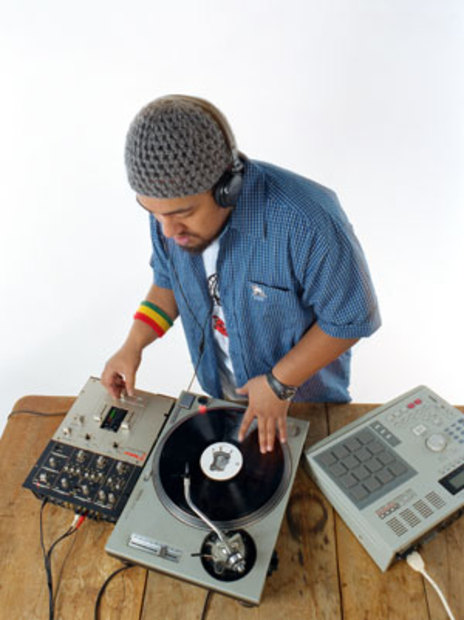
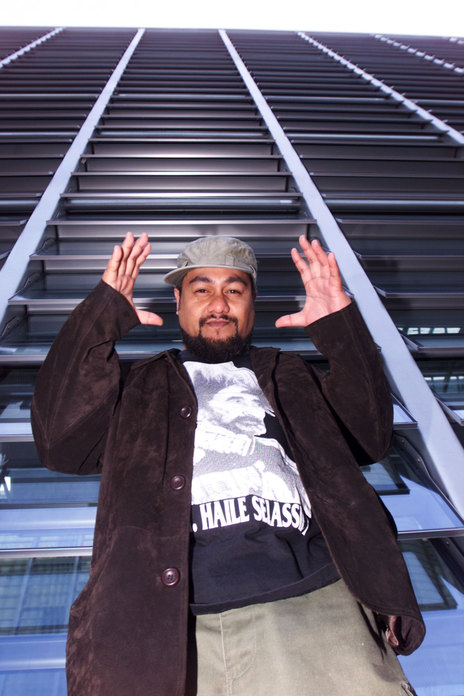
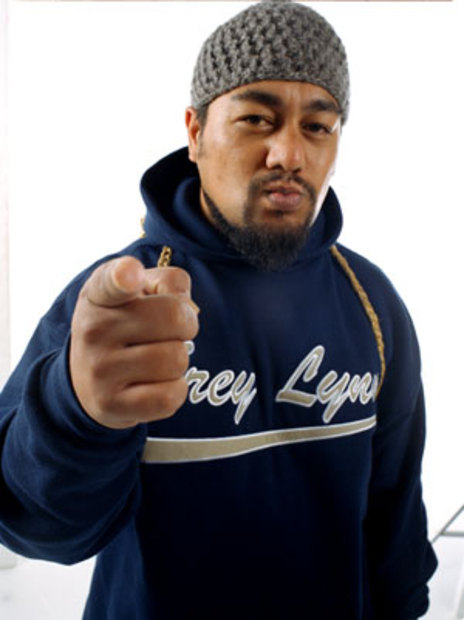
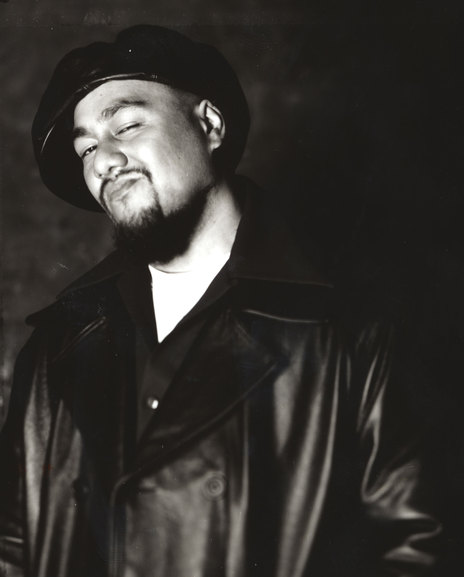
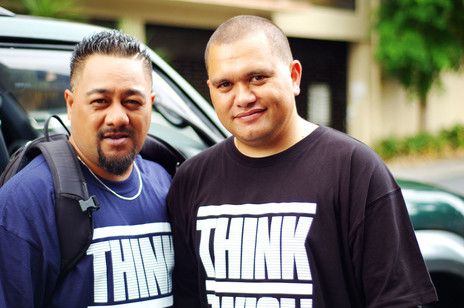
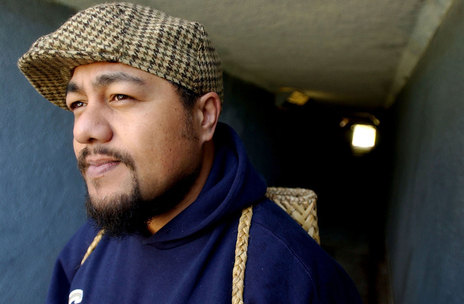
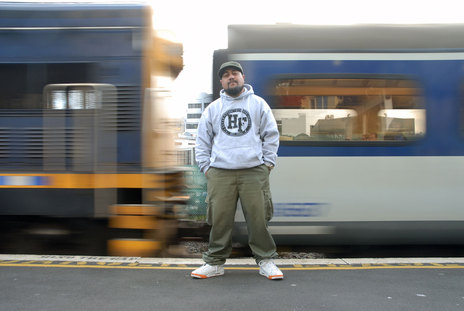
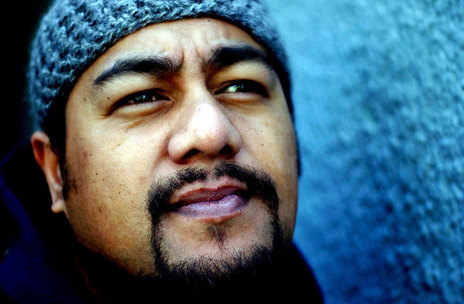
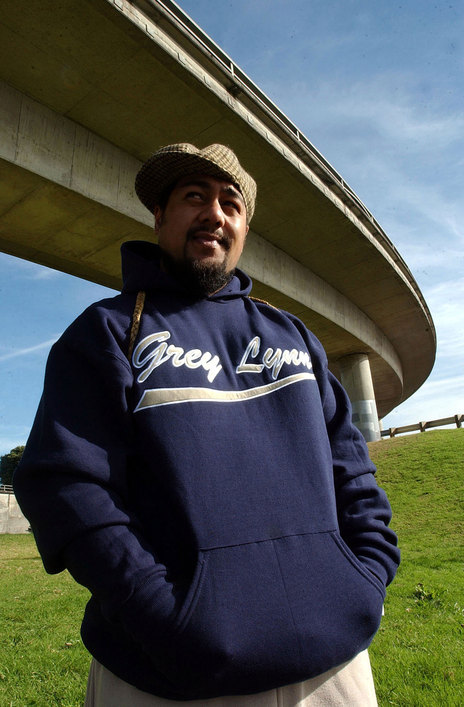
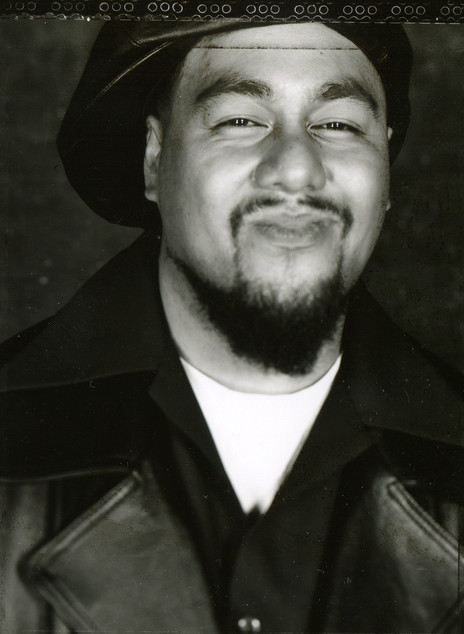
Sony
BMG
Sony BMG
The artwork for 2BSpacific was done by Otis Frizzell and laid out by Che’s old supergroove bandmate, Ben Sciascia.
Visit our sister site
NZ On ScreenMade with funding from
NZ On Air




